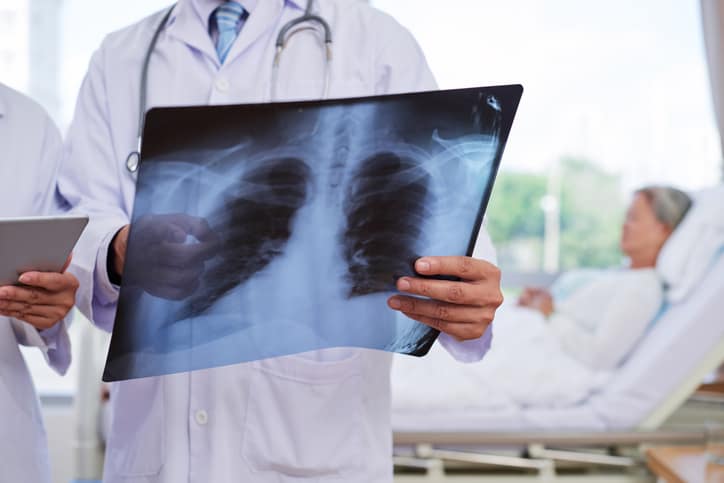
The Covid-19 pandemic exposed significant limitations in widely adopted measures for preventing respiratory viral transmission in hospitals and other healthcare settings, according to a newly published research review.
The value of several common infection control practices—such as designating aerosol-generating procedures as high infection-risk activities—was called into question by findings from studies conducted during the pandemic.
Writing in Annals of Internal Medicine, researcher Michael Klompas, MD, of Harvard Medical School, Boston, and colleagues noted that one of the few “silver linings” of the pandemic has been that it “catalyzed a wealth of new data on the mechanisms and risk factors governing respiratory viral transmissions.”
They noted that recent studies examining SARS-CoV-2 transmission confirm that the most important risk factors for spreading respiratory viruses in the nosocomial setting are community infection rates, viral load, proximity, symptoms, duration of exposure, and poor ventilation.
Factors associated with decreased transmission risk included low community incidence rates, vaccination, masking, better-fitting masks, eye protection, pre-encounter testing, and good ventilation.
“These studies affirm the dominant role of aerosol-based transmission for respiratory viruses, the strengths and limitations of medical masks for source control and personal protection, the mechanisms by which distance diminishes transmission risk for aerosols as well as droplets, the importance of good ventilation to decrease exposure particularly at distance, and the fact that most aerosol-generating procedures do not meaningfully increase aerosol-generation relative to talking, tachypnea, or coughing,” they wrote.
Klompas and colleagues also noted that “many of these findings contradict the conceptual underpinnings of traditional infection control programs and therefore challenge infection control leaders to decide whether and how to modify recommendations.”
They noted that as a result of the lessons learned from Covid-19, the World Health Organization (WHO) and CDC both recently published scientific statements “acknowledging the importance of aerosols in the transmission of SARS-CoV-2,” the study authors wrote. “This is a major change given that, for decades, these agencies have predicated their infection control guidance for respiratory viruses on the premise that most are spread by large ballistic droplets rather than small aerosol particles.”
Assessment of the transmission risks associated with aerosol-generating procedures such as intubation, positive-pressure ventilation, and tracheostomy in several newly published studies have generated surprising findings, the researchers added.
“Remarkably, these studies show that almost all of the procedures traditionally classified as aerosol-generating produce few or no aerosols,” they wrote. “The sole exception is nebulization, which by design aerosolizes medication rather than respiratory emissions. Intubation and extubation generate a negligible number of aerosols, far fewer than volitional coughing.”
A recent study highlighted in the review showed continuous positive airway pressure and noninvasive positive-pressure ventilation to increase aerosol production by 2-fold to 8-fold, at most, compared with quiet breathing, whereas talking increases aerosol production by 35-fold, exercise by 60-fold, and coughing by nearly 400-fold.
The researchers highlighted key implications for infection control within hospitals with regard to masking and other respiratory protection measures, aerosol-generating procedures, and airborne-infection isolation rooms.
They noted that the available evidence suggests that 10%-15% of healthcare worker Covid-19 infections have occurred in the workplace, with transmission largely driven by peers and patients whose positive SARS-CoV-2 status was unknown.
And they noted that the new research calls into question the value of the traditional language used to differentiate pathogens as “droplet” versus “airborne,” writing that “the evidence that all respiratory viruses can be transmitted via both droplets and aerosols begs the question of whether this nomenclature merits reevaluation.”
Continuing to refer to viral pathogens as either droplet or airborne “risks sowing confusion because it is inconsistent with our current understanding of transmission,” Klompas and colleagues wrote, adding that transmission risk does not differ by droplet versus airborne pathogens but by infectious dose, viral load, symptoms, proximity, duration of exposure, and quality of ventilation.
“This is not just a semantic concern: misunderstanding of the factors that govern transmission may lead to misallocation of resources (for example, reserving respirators and negative-pressure rooms for minimally infectious patients undergoing aerosol-generating procedures), inadequate protection for health care workers (for example, using surgical masks alone to see patients with SARS-CoV-2 and high viral loads), and increased risk for patients (for example, relying on 2-meter spacing and curtains alone to protect patients in shared rooms).”
In accompanying commentary, Tara Palmore, MD of the George Washington University School of Medicine, Washington DC, and David Henderson, MD, of the National Institutes of Health, agreed with the researchers’ conclusion that “a binary distinction between droplet and aerosol transmission makes little biological sense.”
“We concur that the nomenclature and approach to respiratory viral management need modification,” they wrote, further citing a study published last August in the journal Science highlighting the importance of non-symptomatic infection in the spread of SARS-CoV-2.
“(Klompas and colleagues) propose de-prioritizing aerosol-generating procedures as meriting higher respiratory precautions,” Palmore and Henderson wrote. “The issue of aerosol-generating procedures remains a poorly characterized conundrum; however, before we discard the concept based on a few studies chiefly using particle counts, we need studies that clearly document that infectious viral burden is not disproportionately distributed in respiratory particles disseminated during those procedures.”
-
The Covid-19 pandemic exposed significant limitations in widely adopted measures for preventing respiratory viral transmission in hospitals and other healthcare settings, researchers found.
-
Recent studies examining SARS-CoV-2 transmission confirm that the most important risk factors for spreading respiratory virus in the nosocomial setting are community infection rates, viral load, proximity, symptoms, duration of exposure, and poor ventilation.
Salynn Boyles, Contributing Writer, BreakingMED™
Funding for this research was provided by the CDC and the National Institute of Allergy and Infectious Diseases.
Cat ID: 152
Topic ID: 89,152,730,933,124,125,30,926,653,927,928,152,929,924,934


